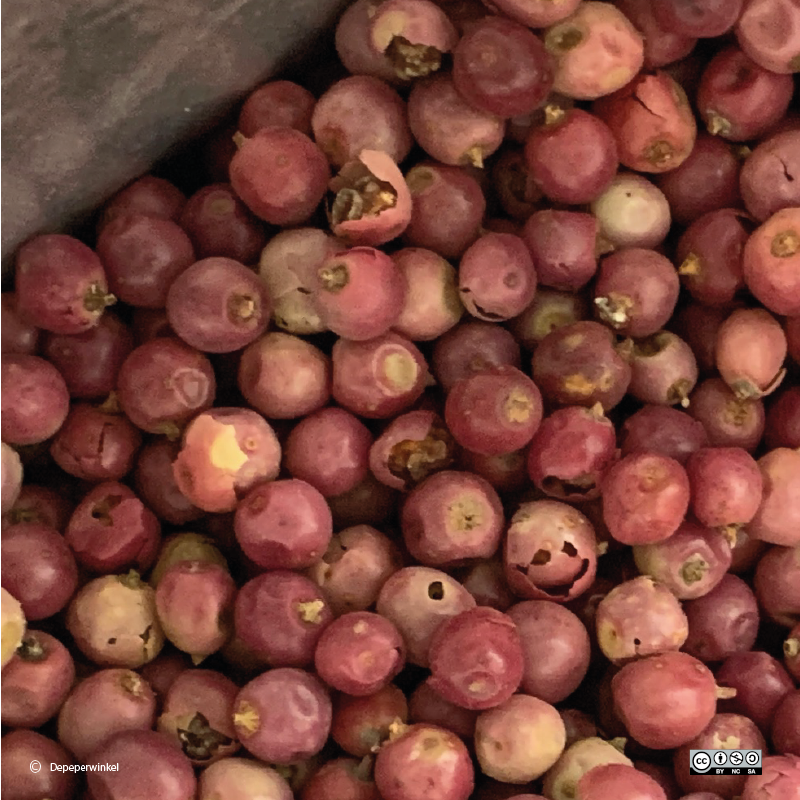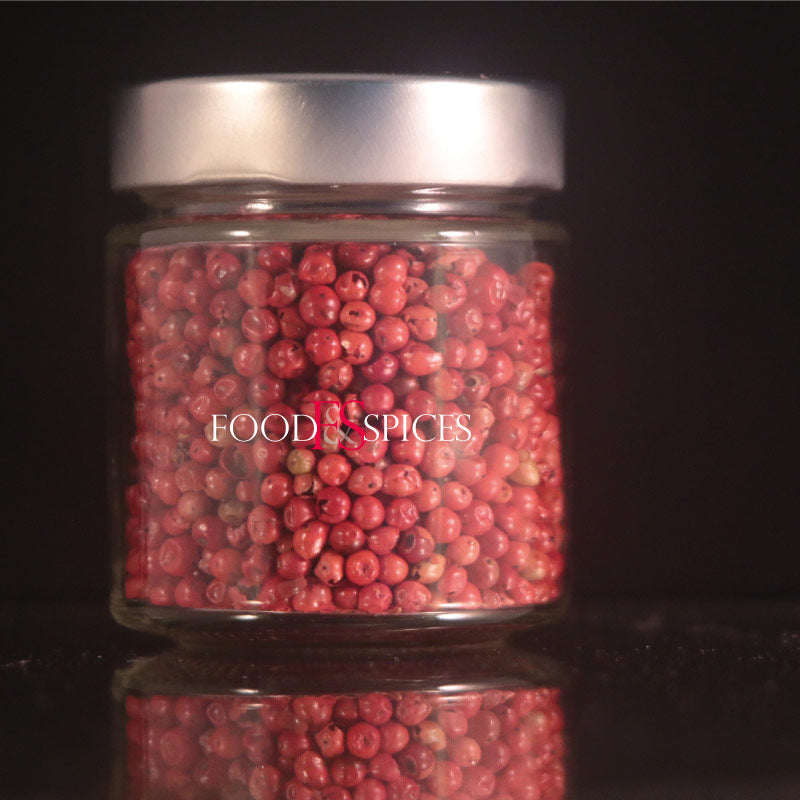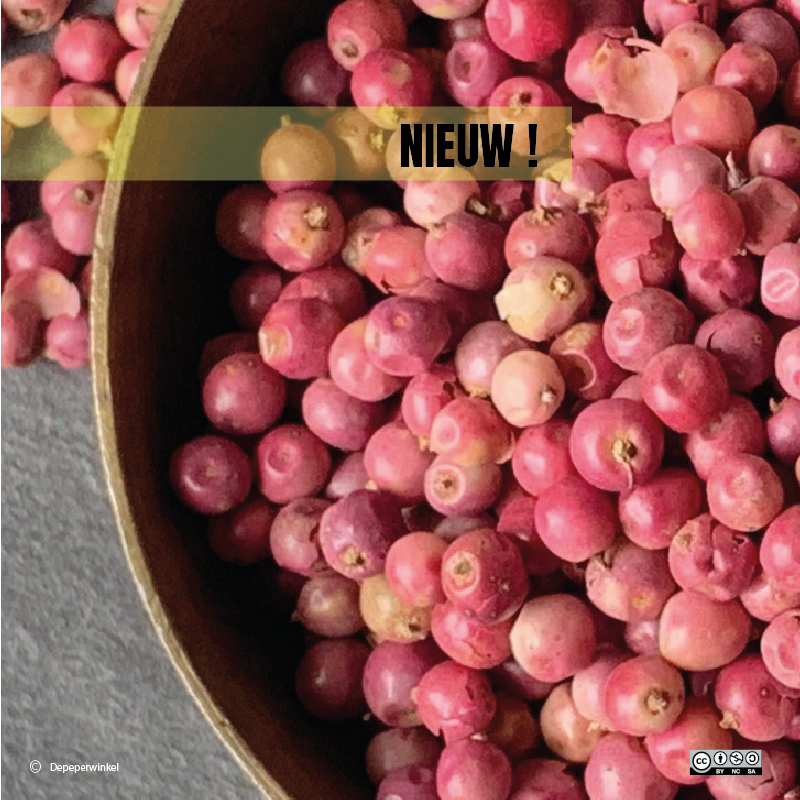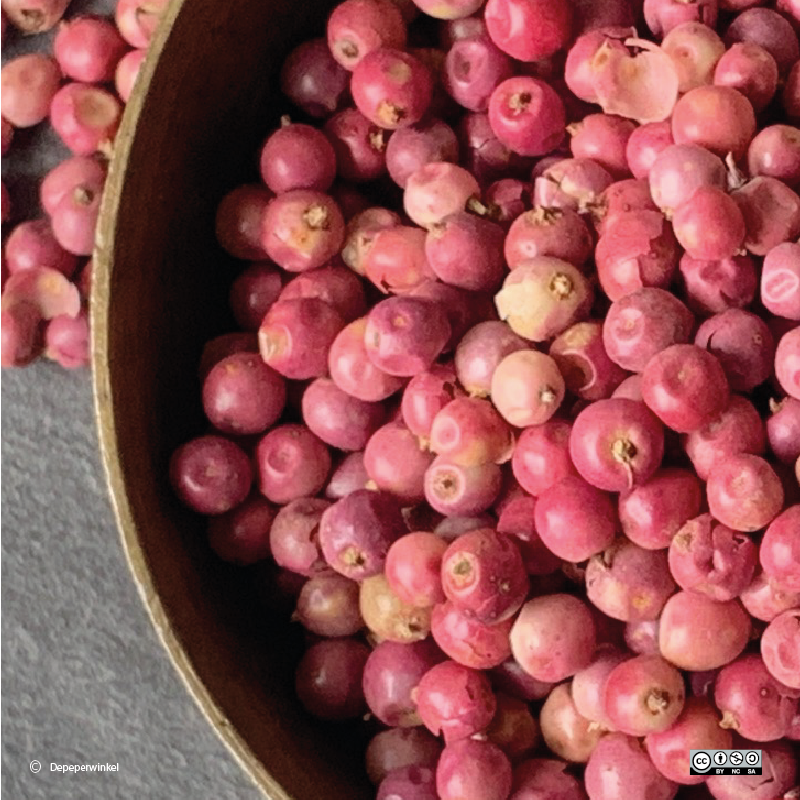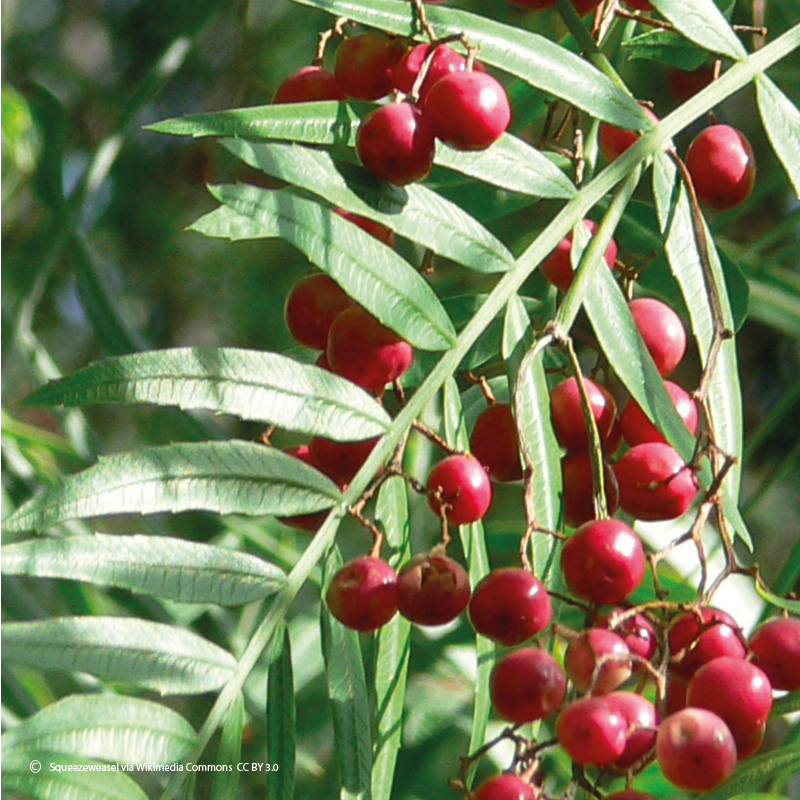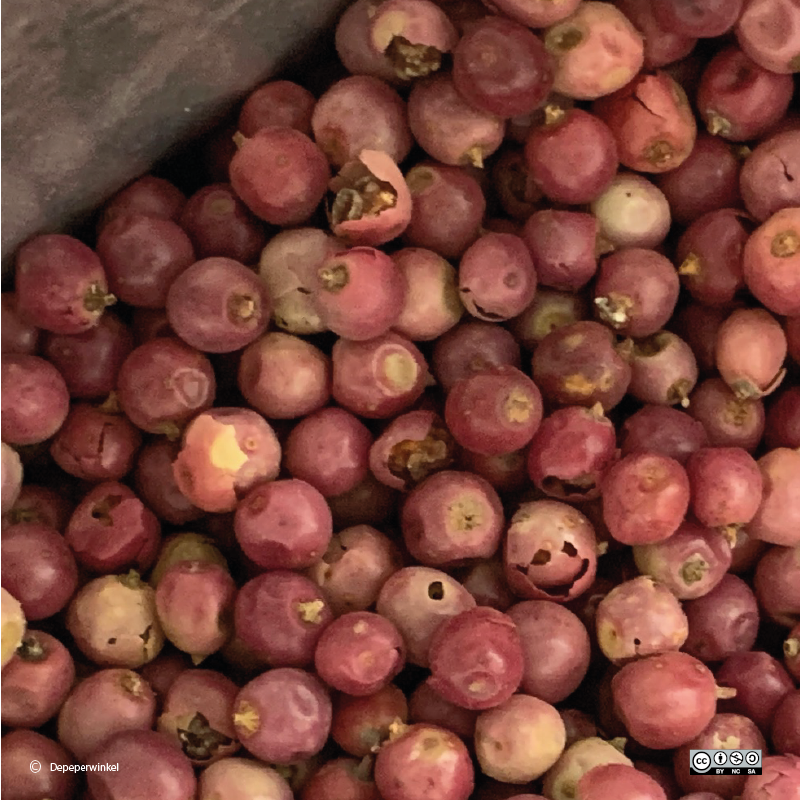The berries of the Peruvian peppertree are known as 'pink pepper', just like that of the more famous Brazilian peppertree. In terms of taste, this pink one distinguishes pepper with a subtle sourness. The berry is pale pink, unlike the pink-red blushing Brazilian berry.
Stock item. Sold out - uncertain if and when new arrivals will arrive
The pink pepper is not pepper, because it is not part of the pepperfamily (Piperaceae), but of the smoke tree family, a not so well-known family, but with well-known plant species such as the cashew (nut), the pistachio (nut), sumac (herb), mango and the Greek mastic. The Peruvian peppertree (Schinus molle) is native to South America, just like the Brazilian peppertree (Schinus terebinthifolius). Both are used as spices.
Our Peruvian pink pepper comes from Colombia. Most Brazilian pink peppers come from Africa, particularly from the islands of Madagascar, Réunion and Mauritius.
Pink berries are also called 'air dried', they then get a wrinkled appearance just like black ones pepperThey are preferably freeze-dried. Freeze-drying preserves the berry's smooth shape and better preserves its subtle flavor and color.
Smell and taste
The pink pepper is not pepper, because it is not part of the pepperfamily (Piperaceae), but of the smoke tree family, a not so well known family, but with well known plant species such as the cashew (nut), the pistachio (nut), sumac (herb), mango and the Greek mastic.
The pink pepper is compared to black pepper hardly to be called sharp, although this Peruvian best berry pepperig flavors. That comes from the phenol carvacrol, an antioxidant that is found in pink pepper, found in much greater quantities in herbs such as savory, thyme, and oregano. The berries clearly taste of juniper berry (also somewhat sweet), which is why the berries are also called red juniper berries. to mention.
Peruvian pink pepper contains the monoterpenes:
- α- and β-pinene, woody pine scent, as in cumin, pine cone, juniper berry and hemp
- α- and β-phellandrene, pleasant mint and citrus flavor, also found in allspice, and
- spathulenol, earthy, also found in oregano and selimpepper
Usage
Peruvian pink pepper Has warm, woody, and spicy notes that are incredibly appealing. The berries combine beautifully with cloves, cardamom, lemongrass, cinnamon, savory, and oregano. Tonka beans, vanilla, allspice, and black pepper and chilipepper.
Delicious when pickled in vinegar.
Try this pink pepper also agree with fruitsPeach, orange, lemon, grapefruit, melon, mango, or papaya. And chocolate, in French tartines (mango) and bread, and even in desserts, such as sprinkling some over peach melba or incorporating it into peach marmalade.
Fable
On the internet, the Peruvian pepperberry often called 'poisonous'. Like the Brazilian pepperThe Peruvian berry can cause allergic reactions in people with nut allergies, particularly cashews, to which the berry is closely related. The berry is certainly not poisonous.
As a botanical
Just an example: the Phizz Star: 50ml Star of Bombay, 15ml Bottlegreen Plump raspberry cordial, 15ml pink grapefruit juice and 30ml prosecco, topped off with pink peels crushed between the fingers pepper. Try an infusion of rose pepperberries and red kampot in a ratio of 2:3 in gin or vodka.
Features:
- 100% Schinus berries molle
- origin: Putumayo Colombia
Assortment
- available in stand-up pouch (30 grams), glass and test tube (10 ml)
- larger quantities on request
Gift wrapping
- The jar is available in a tasteful gift packaging, consisting of a cube box filled with black tissue paper.
- For an overview of our gift packaging, please refer to the section gift wrapping
Allergens
Strictly speaking, pink pepperberries are not allergenic. Plants from the same botanical family sometimes experience Cross-reactivity, an allergic reaction similar to that of its allergenic relative. Examples include apricot kernels (almonds) and pink pepper (cashew nuts). If you are sensitive to cashews - or pistachios - leave pink pepper then stand!
General advice
- pink pepper can be eaten raw and used in hot preparations
- Use the berries whole - also as a garnish - or grind them. Preferably do not do this with a pepperA mill with a metal grinding mechanism. The peels are so thin and oily that the grinding mechanism quickly becomes clogged.
- Also consider using only the peels instead of the whole berries.
Save:
- save your pink pepper in closed packaging
- preferably store in a dark, dry and cool place
- best before June 2027 (06-2027)
- This expiration date is an indication
Would you like to know how this pink pepper tastes?
You can also try a test tube. The tube contains sufficient pepper to fathom the essence of taste.
Batch number
The batch number helps us track which batch an item originates from. It's listed on the packing slip and invoice.
Peruvian pink pepper is a stock item
We have a very limited stock of Peruvian pink pepper, which is why larger quantities are not available at this time.




